Event: 20190724-064340
Many observers in the states and provinces surrounding Lake Ontario reported seeing a bright fireball at 2:44 AM Eastern Daylight Time (2019 July 24 6:44 UTC). It was also captured by multiple cameras belonging to the Southern Ontario Meteor Network, and an analysis of the data provided by these cameras indicate that the meteor became visible at an altitude of 58 miles above the northern shore of Lake Ontario, moving to the northeast at 55,000 miles per hour. The object traversed some 80 miles through the upper atmosphere and slowed to 17,000 miles per hour before fragmenting 18 miles above Little Anstruther Lake, near the Canadian town of Apsley. The orbit and peak brightnes - which was close to that of the Full Moon - indicate the fireball was caused by a fragment of an asteroid about a foot in diameter with a weight over 50 pounds.
Images and Video from Western University's Southern Ontario Meteor Network
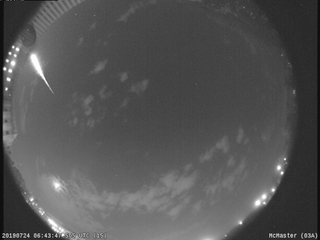
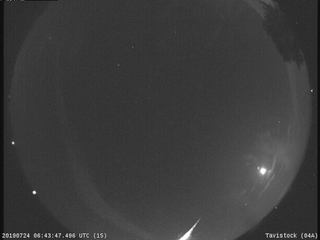
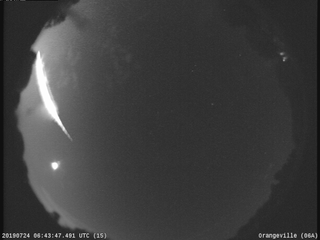
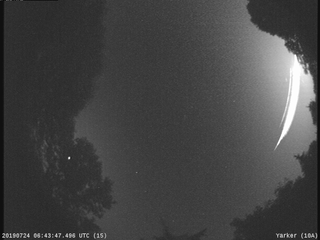
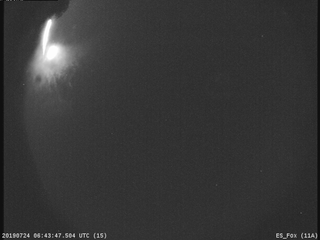
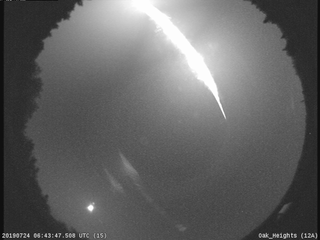
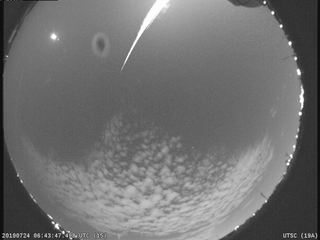
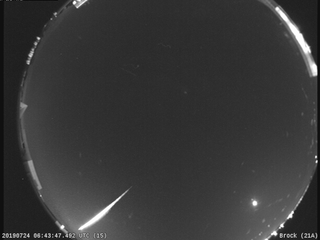
Meteoroid Orbit
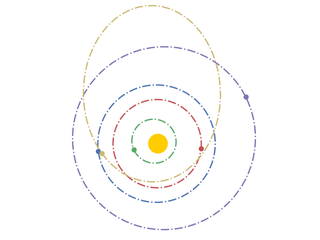
Event Data
| Event ID | 20190724-064340 |
| Date (UTC) | July 24, 2019 |
| Time (UTC) | 06:43:40 |
| AMS Event | 3146-2019 |
| Magnitude | -12.0 |
| Size | 12 inches |
| Origin | asteroidal |
| NASA Camera Start Lat/Lon | +43.754, -78.665 |
| NASA Camera End Lat/Lon | +44.828, -78.153 |
| NASA Camera Altitude | 92.9 km → 28.9 km ( 57.7 miles→ 17.9 miles) |
| NASA Camera Speed | 20.2 km/s (45,100 mph) |
| Chicken Little Start Lat/Lon | +43.919, -78.241 |
| Chicken Little End Lat/Lon | +44.396, -78.213 |
| Chicken Little Altitude | 104.5 km → 50.3 km ( 64.9 miles→ 31.2 miles) |
| Chicken Little Speed | 24.6 km/s (55,000 mph) |
| Notes | potential meteorite dropper |